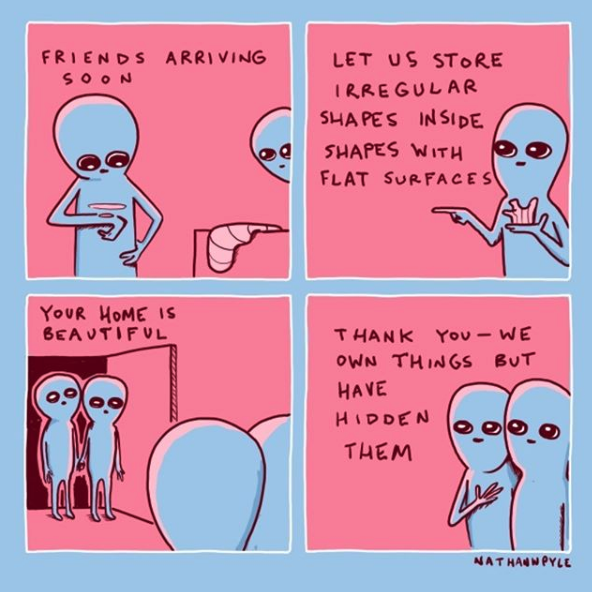Artist Rhonda Wheatly combines spirituality and sculpture into fascinating objects. She explains in her Artist Statement:
"My work is grounded in the speculative, metaphysical, and spiritual, and through it I explore healing, consciousness expansion, and transformation. As an energy healer, I imbue my work with meditative focus and intent. Each sculpture is attuned to the combined energies and symbolism of my materials—vintage found objects and electronics, as well as organic and natural materials, including fossils, cicadas, barnacle clusters, moss, and shed snakeskin. I treat these materials as ingredients that flavor each piece with purpose and power. For instance, barnacles, which attach to objects or other lifeforms for the duration of their lives, are a 'glue' that enhances one’s ability to adhere to intended changes. Fossils bring the energy of millions of years. Clock radios reference time manipulation and frequency—moving through states of consciousness—while antennas and crystals amplify signals.
My long-form titles, themselves written works, are integral to each piece, as they indicate the objects’ uses as shamanic tools. While I push the limits of reality as it’s commonly understood, I also explore often-uncomfortable limitations. Caveats such as 'For self-use only' on a power object that transmutes negative energy and 'The future is a moving target,' on a hybrid device that predicts future outcomes of potential decisions highlight these limitations, emphasizing the importance of others’ free will, the inescapability of unknowns and uncertainty, and that there are few guarantees in life. Ultimately, my objects and accompanying texts hint that acknowledging a universe of vast, yet-to-be-understood possibilities while relinquishing the need for total control, is key to attaining radical freedom."
FULL TITLE: Empath Protector. Helps empaths create healthy energetic boundaries so that they may clearly distinguish their own emotions, needs, and desires from those of others.
MEDIA: Vintage mannequin hand, wooden beads, natural fluorite crystal octahedrons, and acrylic paint.
FULL TITLE: Life Review Device. The Life Review process uplifts users from depression and despair, triggering a life re-boot. Users re-experience their entire lives in a full/extra-sensory consciousness download, infused with the hope and purpose with which they entered this lifetime. The device facilitates the process of releasing blame and grudges, forgiving one’s self and others, and getting back on mission.
MEDIA: Three vintage clock radios, vintage TV antenna, and quartz crystal cluster
FULL TITLE: Energy and Intention Reverberator. Increases strength and resonance of healing energy one receives and.or one’s intention and will.
MEDIA: Vintage mannequin hand, barnacle cluster, ceramic with glass, shed snakeskin, quartz crystals, hand-cut paper, collage, and acrylic paint. Round canvas and moss.
FULL TITLE: Karma Planning Device for Future Lifetime Maximization. Instantly assesses karmic debt accumulated throughout user’s earth incarnations. Knowledge embedded in dormant memory cells, activated by soul at opportune times. Does not override free will. Increases chances of reincarnating at higher levels in subsequent lifetimes. Positive past lifetime impact reverberation highly likely.
MEDIA: Vintage clock radio (metal), vintage TV antenna, and two orange rhomboid calcite crystals
FULL TITLE: Power and Energy Amplifier. Increases power and healing energy one receives and/or sends to others.
MEDIA: Vintage mannequin hand, barnacle cluster, titanium quartz crystals, cholla cactus wood, and acrylic paint.
FULL TITLE: Subconscious Translator. Navigates unconscious mind. Decodes messages from one’s subconscious self received via dreams, physical ailments, and mysterious behaviors. Gets to root of self-sabotage, projection, haterism, addiction, and more. Provides emotional protection as painful suppressed memories surface. For self-use only.
MEDIA: Vintage headphones, beads, quartz crystals, plant roots, fossilized shark teeth, snake skin sheddings, collage, and acrylic paint
FULL TITLE: Trauma Healer. Repairs damage to physical body brought on by emotional trauma, beginning at the cellular level.
MEDIA: Vintage mannequin hand, wooden beads, snakeskin sheddings, various seashells, snake bones, catfish atlas bone, and acrylic paint.
https://www.rhondawheatley.com/

























































